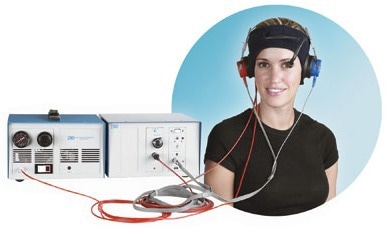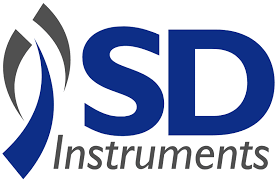Trace eyeblink conditioning is a popular technique designed to explore the neural mechanisms that underpin motor learning in both human and animal subjects. This technique involves the classical conditioning of learning and memory via the paired presentation of tone conditioning stimulus.
This stimulus starts and finishes with an air puff test that will always elicit a response. After repeated paired presentations, a conditioned eyeblink develops before the air puff.
This type of conditioning has been systematically studied, with the cerebellum (which controls and coordinates muscular activity) now recognized as essential to both animals and humans.
How does Trace eyeblink conditioning work?
Delivering unconditioned stimulus to the eye’s cornea results in sensory information being taken into the trigeminal nucleus. This is transmitted both indirectly and directly to the abducens motor nuclei and accessory abducens. These nuclei’s output regulates a number of eye muscles that work cooperatively to generate an unconditioned blink response to the stimulation.
Eyeblink conditioning is regularly used to monitor abnormalities in cerebellar-dependent learning and memory, a principle that underpins this type of associative learning.

Image Credit: San Diego Instruments, Inc.
Applications of SDI’s Trace eyeblink conditioning system
Eyeblink conditioning is one of the most straightforward and well-understood motor learning techniques. San Diego Instruments’ (SDI’s) Trace eyeblink conditioning system is portable, turnkey, and able to deliver high-quality data collection and analysis via menu-driven software linked via a USB interface.
Using a laptop, this system can be transported anywhere, and its comfortable headset enables easy viewing of subject responses. This system is routinely employed in basic learning studies and in examining the behavioral consequences of Alzheimer’s and other diseases.
Eyeblink conditioning is also a key component of psychopharmacology research, and can be used to recognize individuals with associative learning impairments. This is important because delayed conditioning can be disrupted in children and adults with neurological disorders such as fetal alcohol spectrum disorders, schizophrenia, and autism.
Examining eyeblink conditioning in infants can facilitate earlier detection and treatment of these neurological disorders.
Why choose Trace eyeblink conditioning systems from SDI?
The Trace eyeblink conditioning system from SDI requires no technical knowledge to set up and does not require the specialized interface cards or drivers typically associated with Trace eyeblink conditioning systems.
SDI’s Trace eyeblink conditioning system uses intuitive menu-driven software to control stimuli, monitor, and safeguard all eyeblink data throughout every session. Complete response waveforms are classified as “alpha,” “CS,” or “US,” and these are automatically examined using the special analysis software to enable the determination of secondary peaks.
Acknowledgments
Produced from materials originally authored by San Diego Instruments.
About San Diego Instruments, Inc.
For more than 30 years, San Diego Instruments has served the scientific community as a comprehensive resource for the design, manufacture and distribution of behavioral neuroscience research instruments used in human and animal studies. Utilized in laboratories and cited in research papers worldwide, SDI systems have come to represent the industry standard for quality and longevity. Our premier SR-LAB™ is the world’s most widely used startle response system. At SDI, our commitment to developing quality products that stand the test of time is matched only our dedication to excellent customer service. We take pride in our ever-growing core of loyal clientele.
SDI behavioral neuroscience research systems afford you the utmost in quality and performance, giving you the edge in an industry where Power, Flexibility and Ease of Use are everything.
Sponsored Content Policy: News-Medical.net publishes articles and related content that may be derived from sources where we have existing commercial relationships, provided such content adds value to the core editorial ethos of News-Medical.Net which is to educate and inform site visitors interested in medical research, science, medical devices and treatments.